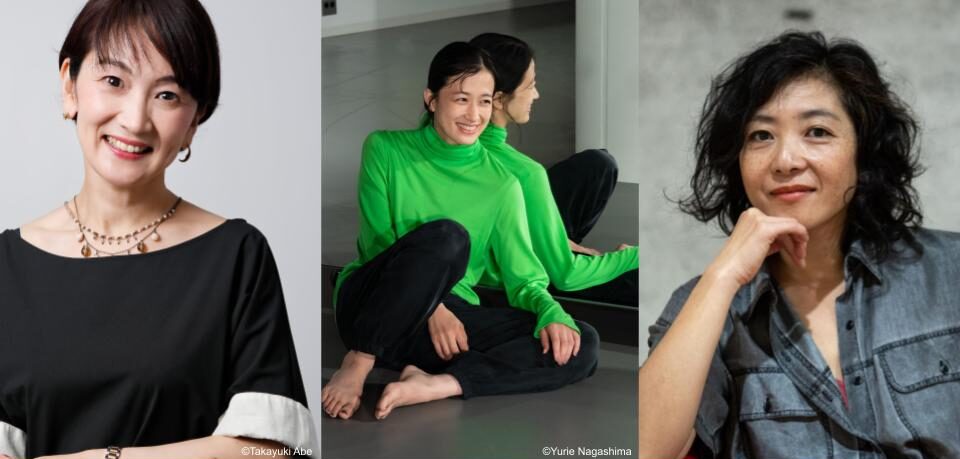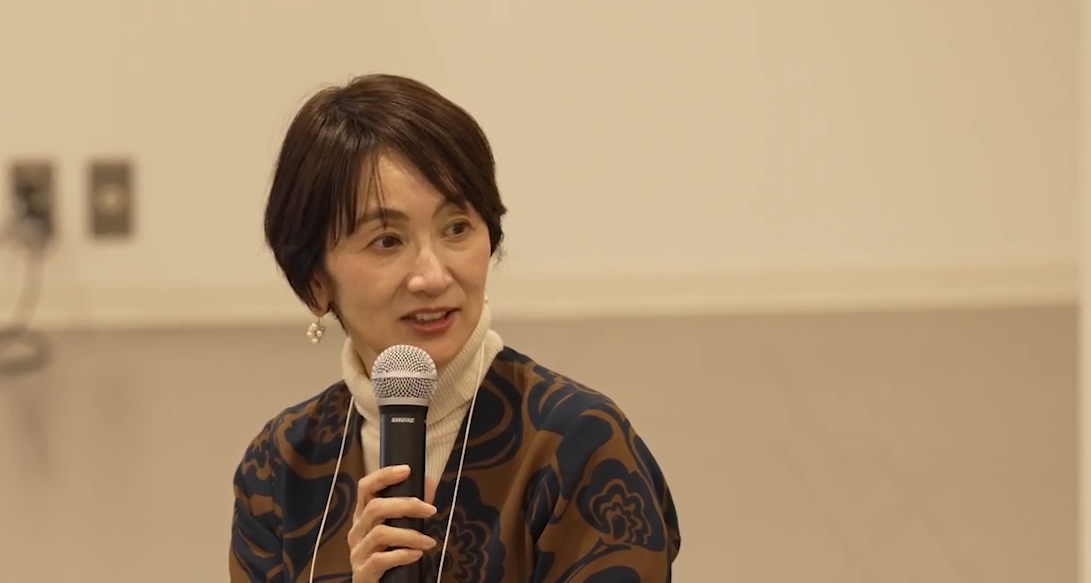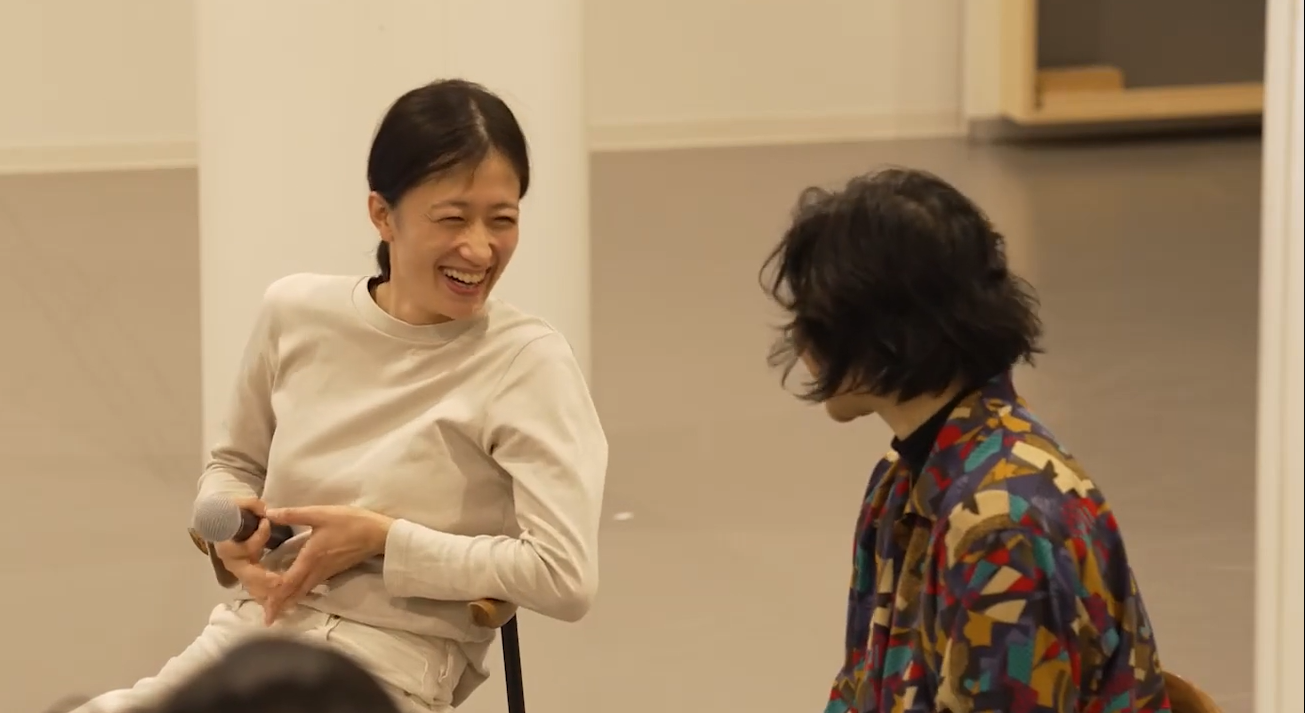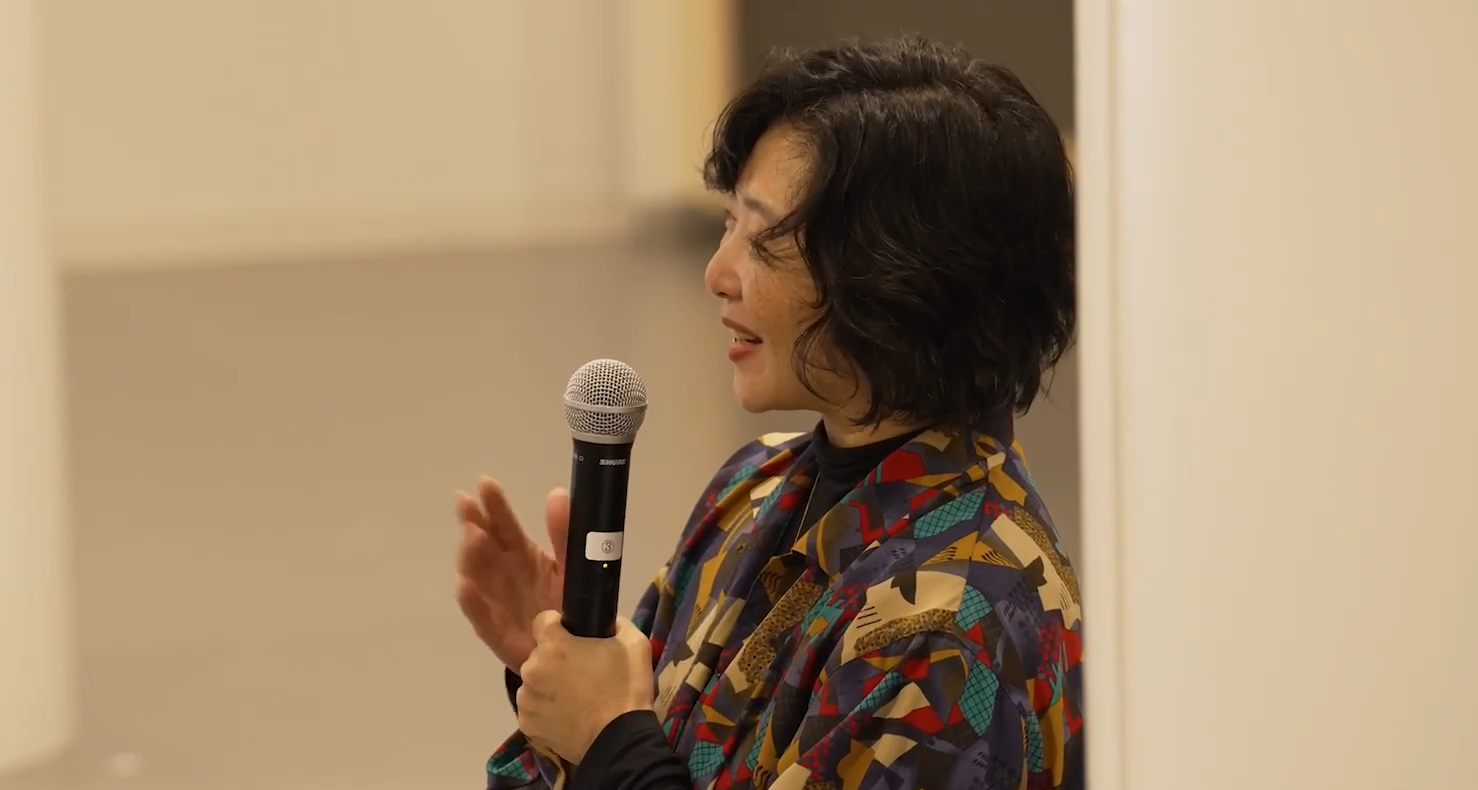OpenLab DaBY Round Table Talk vol.2 Mariko Kakizaki x Mami Shimazaki x Eri Karatsu Childcare and Creative Environment (2)

OpenLab DaBY Round Table Talk Childcare and the Creative Environment vol.2.
Click here for vol.1
Speakers: Mariko Kakizaki, Mami Shimazaki, Eri Karatsu
Facilitators: Chihiro Tokai, Yuka Kamimura
Change of heart in creative work after childcare
Tokai: Kakizaki-san, you mentioned that you created with DaBY when your children were young. I know there must have been physical changes with your child, but did your inspiration or way of thinking change when you were creating?
Kakizaki:With the birth of my child, I have become more “okay” and less rooted. I don’t know if this is a good thing for me as an artist, but it has also made it easier for me to be generous and incorporate other people’s opinions. My daughter is 2.5 years old now, and I am really busy. I don’t have time to imagine or think about anything because I am going this way and that and picking her up. Can’t-Sleeper,” which I performed at DaBY, was about insomnia, and things that are close to my life have become the subject of my work. Instead of fiction and fantasy outside of myself becoming the subject of my work, it became a work about the society I live in now. I am so glad that this is because of my daughter. I am very happy to feel this change.
Tokai: I felt warmth when I saw “Can’t-Sleeper”. I felt a warmth that was very close to me, and I wondered if things had changed since the birth of your child.
How about you, Mr. Shimazaki? Compared to Mr. Karatsu’s harsh situation, I think the company was more accepting of you. Did you have any change of mind about dancing or any new discoveries such as this that you had not thought of before?
Shimazaki:There was. As Mr. Kakizaki said, I was still busy, so I became less competitive. I no longer dance for my rivals or for Ohad, who was the leader of the troupe, and I dance for myself. In that sense, I was able to be more relaxed. I think I am now able to express my own life in my dancing. I think my way of dancing has totally changed.
Kakizaki: I feel similarly, and I no longer make excuses. Instead of “I couldn’t warm up at all because the train was late,” I now put my child to bed until 3 minutes before the performance and then go on stage.
Shimazaki:I know what you mean. The way you take it to the next level is much quicker.
Karatsu: Housework and other tasks are called multitasking, aren’t they? You will be able to switch between them.

Tokai: Did you come to feel this way too, Mr. Karatsu? Between working in the field and raising children, you have become better at switching between the two than you were before your child was born, etc.
Karatsu: You have to do it, don’t you? If you are crying and think you might die, you will be in a situation where you can’t think about anything, so you won’t drag it out. Even if I have a bad day at the office or something is bothering me, I am committed to facing my children when I get home, so I have come to know clearly what the switch is inside me.
On the other hand, I also become concerned about the situation of children in society. The dance industry and theaters are inevitably a group of special people. When children are born, they come into contact with the PTA, club activities, neighborhood associations, and other communities that they have not come into contact with before. As you are forced to deal with people you normally don’t pay attention to, you are confronted with the fact that everyday life and dance are far away from each other. When people ask me what I do for a living, it is very difficult to explain. So, it made me think about what I should do to get more people to see my work, and what kind of projects would be good for them, from the point where I had only had to make works for people I liked in the theater.
Workshops for children and projects for parents and children
Tokai: With the birth of your child expanding your involvement in various areas, have you started any new projects that you did not have before?
Karatsu: Let me introduce one. It was a project I brought to a neighborhood elementary school when my oldest child was 6 years old and my youngest was only 1 year old. I wanted to create a performance with Kim Ito, a butoh dancer, Yosuke Yamashita, a jazz pianist, and the children. The children of the school, the neighborhood children, and the children of the neighborhood were all invited to participate. We gathered the children of the school, neighborhood children, and dancers from Aichi Prefecture, and used the entire school building for a one-day performance. We used the entire school building, and at the end of the program, we all performed together. I was using my summer vacation from work, and even though I was just raising a busy child, staying inside the theater became a struggle for me. At this time, in my free time, I was making projects outside like this.
Kakizaki: Nowadays, anyone can look things up on the Internet, so when I told the nursery school my child goes to that I dance, before I knew it, they were searching for me. The teachers understand what dancers do. It makes it easier for us to send them there.
Karatsu: I see. I made this project in 2002, but I think schools are more rigorous now. At that time, there was no Internet yet. But there were generous teachers, and I think we were able to just say, “Why don’t you do it? It’s fun.” I think we were able to do it. It was rare, and NHK made a documentary about it. At the end of the documentary, one of the students said in an interview, “I will definitely become a dancer,” and it was a tear-jerker. There were dancers from the dance company Kim Ito + Shining Future and Ikuyo Kuroda from BATIK as assistants, so it was a very fulfilling time.

Tokai: (Looking at the video) Everyone looks very nice. They look very happy.
Karatsu: Anything was possible. For example, we were told not to run in the school, so we would run in the hallways, or we would turn on the water tap and get soaked with water, and then play on it. You may not find a school that is so generous. The reason I wanted to do these things was because of my children. But I didn’t have the energy to continue. If I tried to do this now, it would be too difficult to negotiate with the school and explain to the parents.
Kakizaki: After I had my child, I became interested in workshops for children and started thinking about how babies and parents can dance together. Now, when I think about what I want to do while holding my child in one hand, I want to dance with people who are the same as me, and that was something very natural, so I guess my interest and attention naturally grew. I thought that Mr. Karatsu was doing the same thing.
Karatsu: Actually, I have been running a project called “Dance with Babies” at the Aichi Arts Center for about five or six years now, in which participants dance with babies aged from six months to two years old. The premise is that the baby must be able to carry the baby in his or her arms, but we use the baby as a weight in the workshop so that the baby and the mother or father can experience dance together. The workshop is held during the summer holidays and has been well received every year.
Kakizaki: I took my 2-year-old daughter with me and we did a class for babies and parents. My daughter seemed to get sleepy after dancing with everyone, and after about 30 minutes, she started crying. I couldn’t handle it anymore and ended the class halfway through, saying that I wasn’t strong enough. But the mothers, all of whom knew that their children were unruly, told me that was right (laughs).

Karatsu: In the workshop I am planning, the instructor is not bringing a baby, but he/she also has a child and is thinking about how to involve people with babies and children in dance, and having a child is still a trigger for everyone.
New career after childcare
Tokai: Mr. Shimazaki, when your children were a little older, you also worked in schools.
Shimazaki:I was with Batsheva Dance Company for five years while raising my child, but I had reached my limit. When my daughter was about to enter the first grade, I quit the Batsheva Dance Company because I had been there for 12 years and thought that was enough. I was invited to work as a dance instructor at a school called the Democractic School, where I worked as a freelancer for a year. I was interested in it, so I decided to take a break from dance. I was interested in it, so I decided to take a break from dance and try education as a second career. I had been in the fluffy, glamorous world of dance, and as I entered the world of childcare and then education, it was like I was going downhill. I continued to be a homeroom teacher for the next 10 years. With my daughter getting older, I decided that I wanted to go back to dance because I still love it, so I cut back to twice a week now and quit my homeroom teaching career.

Tokai: What is homeroom work like?
Shimazaki: In the Democratic School system, children vote for their favorite homeroom teacher at the beginning of the school year and choose from about five classes per hour to create a timetable that suits them. The homeroom teacher’s job is to talk, play, and listen to the problems of the children who have chosen him or her once a week. I also have a morning meeting and a group get together for an hour a week.
Tokai: So it’s a regular school where students go during the day, and they choose their own homeroom teacher of their choice and take the class of their choice? Do the students choose their homeroom teachers, or do they have a chance to meet them before that?
Shimazaki:Yes, there is a two-week period at the beginning of the school year to try out homerooms and classes, after which each group of about 20 students votes for up to their third choice.
Tokai: Did you also teach dance?
Shimazaki: Of the approximately 10 hours a week I had classes, 8 hours were dance and 2 hours were teaching Japanese culture. We taught many different types of dance, and we had ballet and free dance time for different levels and styles from first grade to third grade in high school.
Tokai: Did you become interested in education when you started raising children?
Shimazaki: I was lucky to meet Democractic School, but being in the fluffy dance world and being a single mother, I learned a lot in education. In raising my children, I learned many things, such as how to tell them in such and such a situation.
Tokai: Now that both you and Mr. Shimazaki and Mr. Karatsu have children over the age of 20, the impact of child-rearing on your relationship and career has changed considerably, hasn’t it?
Karatsu: Yes, it is difficult. Adolescence is coming, which is different from the difficulty when you were little. I think it is difficult to be too close or too far away in a relationship. You mentioned education, but it is not only about children, but also about how we face others. There is a part of me that can be utilized in how I greet young dancers who are about the same age as my sons here and now. I am still learning.
Continue to OpenLab DaBY Round Table Talk vol.2 Childcare and the Creative Environment (3)


